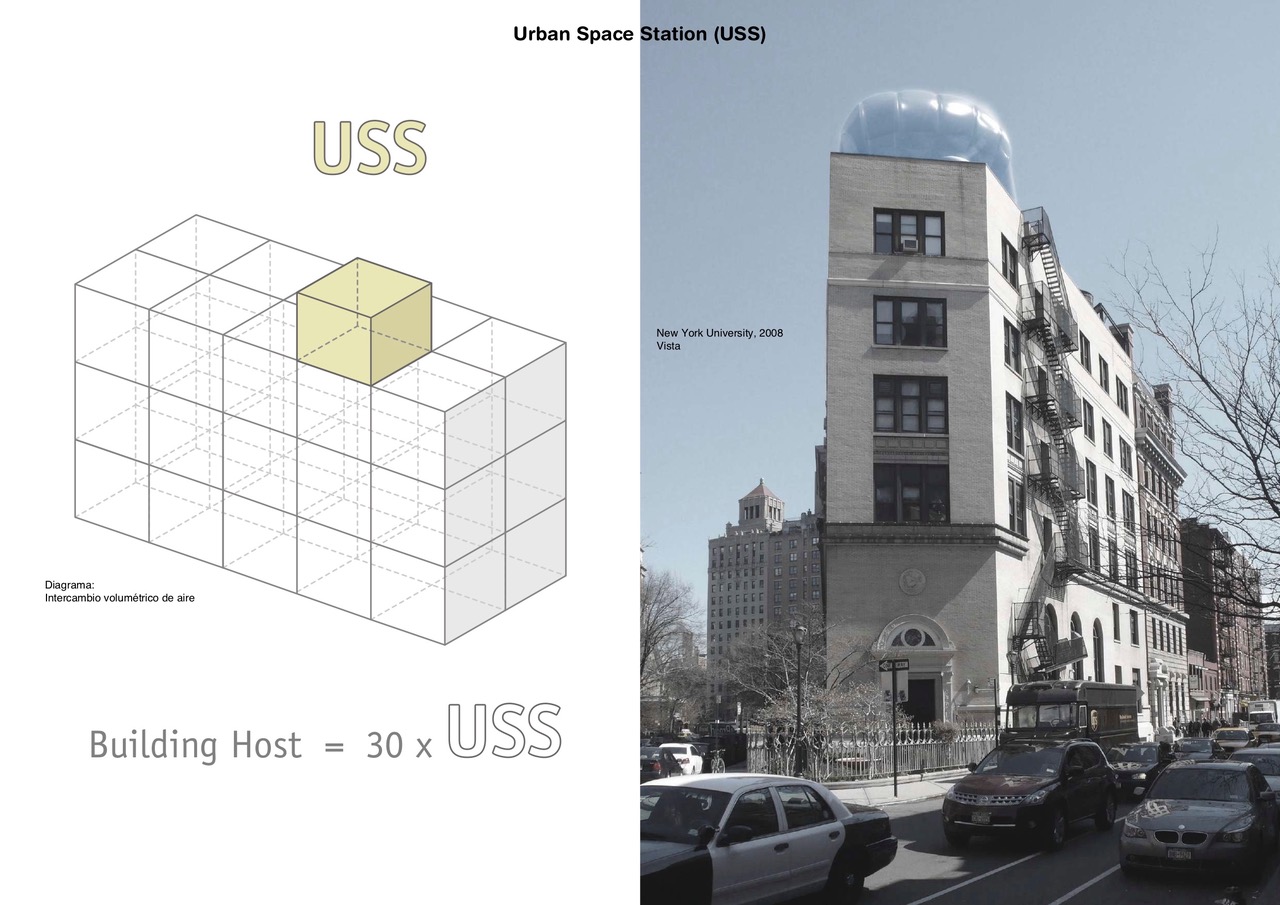A prototype for the general invasion of rooftops and other residual spaces with high biodiversity, redemptive ecosystems, USS-s serve as seeds, catalyzing a natural recuperation of the city’s surfaces. Their uses range from scientific and educative to recreational, while they capture carbon emissions and generate oxygen. ETFE’s double skin allows for the structure to be lightweight and creates a heat exchange. Rainwater accumulates in underbelly bags, while the texture design of the structure itself helps channel the airflow to generate electricity. Secondary use as ultra-fine particulate collector has demonstrated capable of passively cleaning street-level air near host buildings. A 40% of this prototype (USS 1.0) was built and tested within the exhibition Souls & Machines, Digital Art & New Media, held in 2008, at the National Art Museum Reina Sofía in Madrid. In 2016, a 1:1 prototype was built for the Art Triennial Emscherkunst. Placed on top of an existent building, docked onto the air conditioning of the surrounding buildings, it created a cleaning circulation; the building’s waste air and warmth were filtered by the USSs plants, cleaned, and enriched with oxygen before it was led back into the building.

